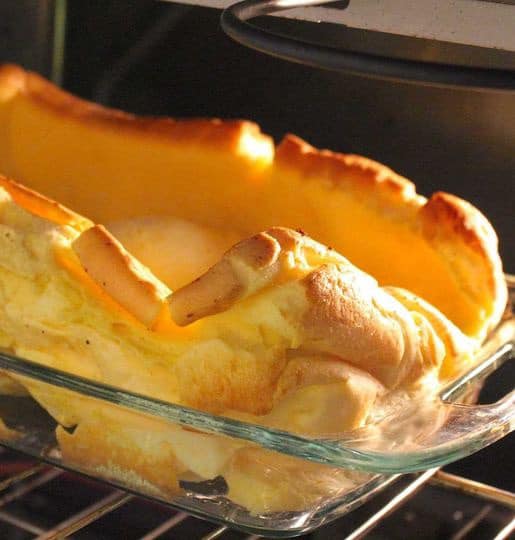ADVERTISEMENT
# Dutch Baby Bake: The Fluffy, Golden, and Versatile Breakfast Treat
When it comes to indulgent breakfasts or brunches, few dishes stand out as much as the Dutch Baby Bake. This massive, puffy, and golden pancake is the perfect blend of simple ingredients and comfort food at its finest. Whether you’re enjoying it as a cozy breakfast on a lazy weekend morning or serving it at a brunch gathering, the Dutch Baby is sure to impress with its impressive rise and rich, buttery flavor. In this article, we will dive deep into the origins, preparation, variations, and reasons why you’ll fall in love with this delicious dish.
—
## **What is a Dutch Baby?**
A Dutch Baby is a type of German pancake that is baked in a skillet. It’s known for its dramatic rise, creating a beautifully puffed, golden-brown exterior that gives way to a soft and custardy interior. Often served with powdered sugar, syrup, and fresh fruit, it has a striking resemblance to a pancake but with a much lighter, fluffier texture. The dish is commonly served for breakfast or brunch and is a fantastic alternative to traditional pancakes or waffles.
Unlike typical pancakes, which are cooked on a griddle or frying pan, a Dutch Baby is baked in the oven. This results in its signature rise, creating a dish that’s almost like a cross between a souffle and a pancake. The batter is made from a simple mixture of eggs, flour, milk, sugar, and butter, and when baked, it forms a large, puffy pancake that’s perfect for serving family-style.
—
## **The Origins of the Dutch Baby Bake**
While the name “Dutch Baby” might suggest a Dutch origin, this dish is actually an American creation. The recipe is often attributed to a Seattle restaurant called “Manca’s Café” in the early 1900s, where a woman named Liza Manca is said to have developed the recipe. It’s believed that the name “Dutch” was inspired by the Pennsylvania Dutch (a term for the German-speaking settlers of the region) rather than actual Dutch cuisine. The word “Baby” is thought to have been added by Liza’s daughter, who believed the large, puffy pancake resembled a “baby” version of a German pancake.
The recipe has since become a beloved breakfast or brunch dish, spreading far beyond Seattle and across the United States. While it’s not widely eaten in traditional Dutch or German cuisine, it has become a staple of American brunch menus. Over the years, it has evolved into many variations, incorporating different fruits, toppings, and flavor combinations.
For Complete Cooking STEPS Please Head On Over To Next Page Or Open button (>) and don’t forget to SHARE with your Facebook friends
